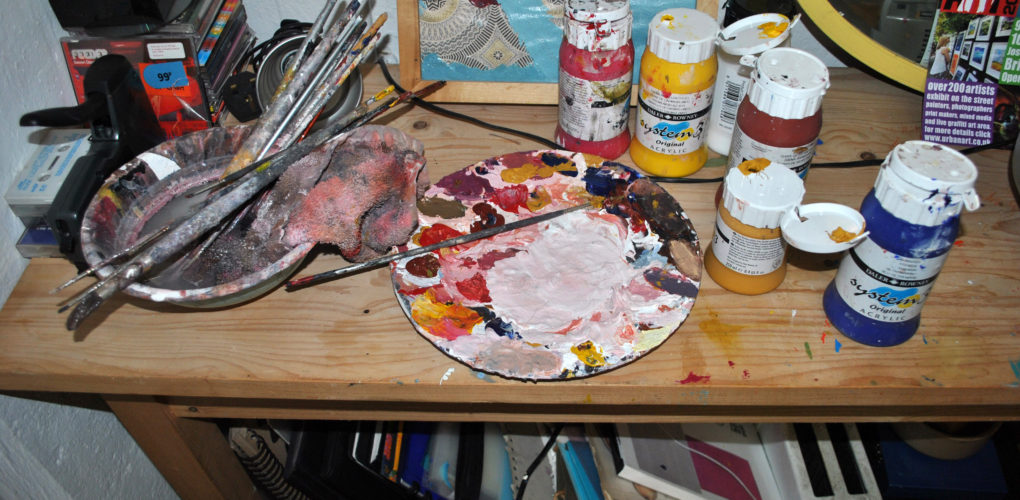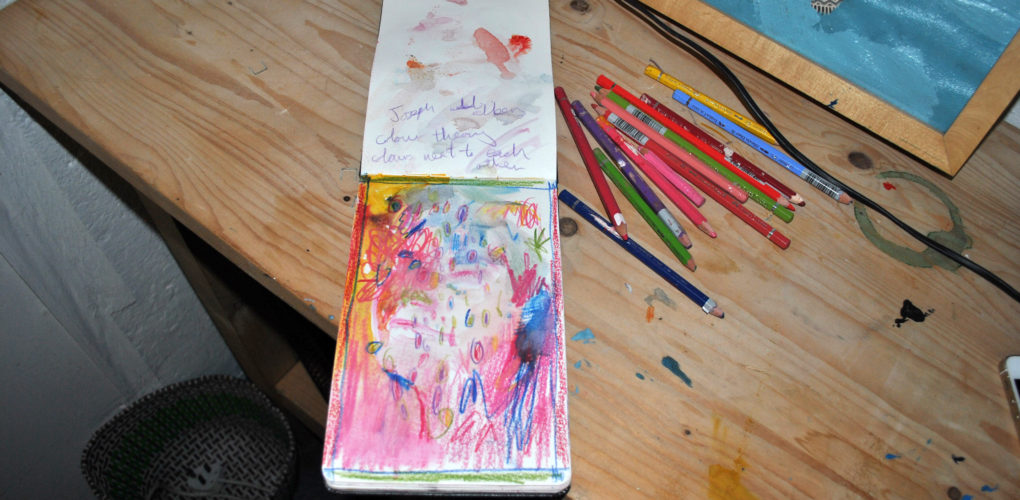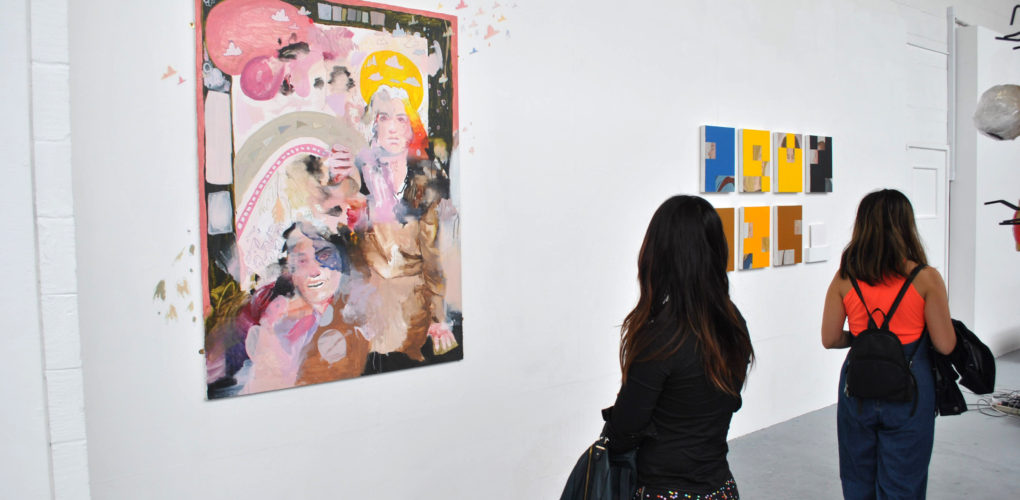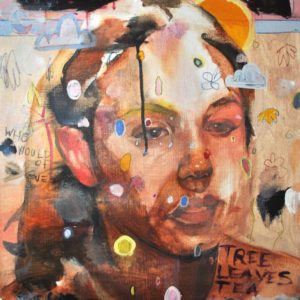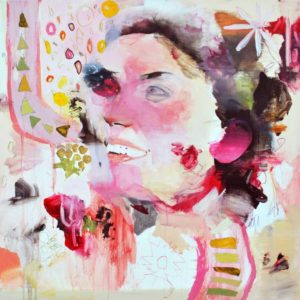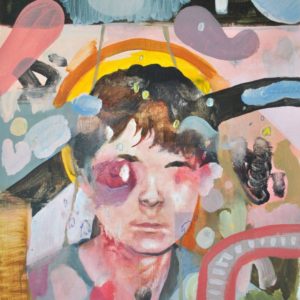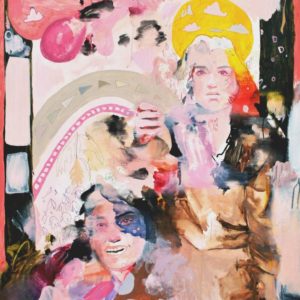One to Watch
 Joshua Evans-Hooper’s abstracted portraits are explorations of escapism
Joshua Evans-Hooper’s abstracted portraits are explorations of escapism
Joshua Evans-Hooper likens his paintings to daydreams–fantastic explorations of images that stray from reality. Though many of his subjects are sourced from found imagery, he obscures and distorts these figures, adding layers of color and organic shapes. Joshua also embraces digital practices, as he deconstructs film stills, works with Photoshop to construct compositions, and uses a Google algorithm to determine a color palette for a given work. His final portraits are fragmented and abstracted, inviting the viewer into escape from reality.
Joshua lives and works in London. He received a BFA with first class honors from Kingston University and a Higher National Certificate in Fine Art from Kensington College. His works have been exhibited at the Islington Arts Factory summer salon as well as at the Stanley Picker Gallery in England.
What are the major themes you pursue in your work?
The intention of my painting is to transcend the viewer into a dream-like landscape, indicative of film. This fantasy landscape entrenched with figures is an intangible site, a place not quite rooted in reality. The work is a materialization of a daydream, redolent of escapism. It is a mental diversion exemplified by recreation and re-screening.
When do we get to the boundary of representation, dissipated into the realm of abstraction? The painting is an “optical acrobat,” it uses the language of abstraction but it is still anchored in representation.
I work thinly over canvas with diluted acrylic paint and watercolor pencil, and then use deformed fields of color to similarly deface and obscure human figures and landscapes. The painting is overworked, and spaces on the canvas are left exposed to reinforce this dialectic notion. The brush strokes often range from gestural to contained marks and from facets of bold pigment to saturated pastel-like colors.
I use color themes from a Google algorithm, which finds images similar to the ones I upload. I upload photographs of lens flares or expired film and look for unusual gradients and juxtapositions of color in these stolen/found photographs. When working from photographic sources, the tendency is to use restraint when referring to the photo, so as not to produce a concrete location. Instead, I use partial ephemeral memories to obtain an elusive and indefinable scene, a space between places.
Digital technology is a component throughout the painting, such as the deconstruction of film stills and the construction of composition through Photoshop. The construction of the painting’s identity is embodied by collage. I describe collage as a collision of rehearsed narratives, images are thrown and confronted into a thematic assembly. When working from photographic collage, the painting becomes a recycled symbolic plane.
The characters/figures extracted from the film stills often share an erotic, innocent, and aggressive demeanor. It is evocative in escapism to try and indulge in fantasy to mask fundamental visceral feelings of aggression and overall sorrow. I wanted to fixate on erotic and innocent source material, which is widely inherit in old cinema, to reinforce the transmission of the viewer to this desired fictitious place just as old cinema today seems fictitious and over worldly.
Escapism is a discouraging topic as our society is secularly Puritan-based in that it looks down upon unproductive daydreamers. The painting is effervescent and welcoming especially through the playful tones. The painting is provocative and defies complacency to not be an unproductive daydreamer, it becomes a revolt against existing in the real.
What was the best advice given to you as an artist?
Don’t be cheap on paint and loosen up!
Prefer to work with music or in silence?
I listen to a lot of grime and rap. I can’t work in silence.
If you could only have one piece of art in your life, what would it be?
Adrian Ghenie’s Pie Fight Interior 3.
Who are your favorite writers?
Slavoj Žižek and Terence Mckenna.


